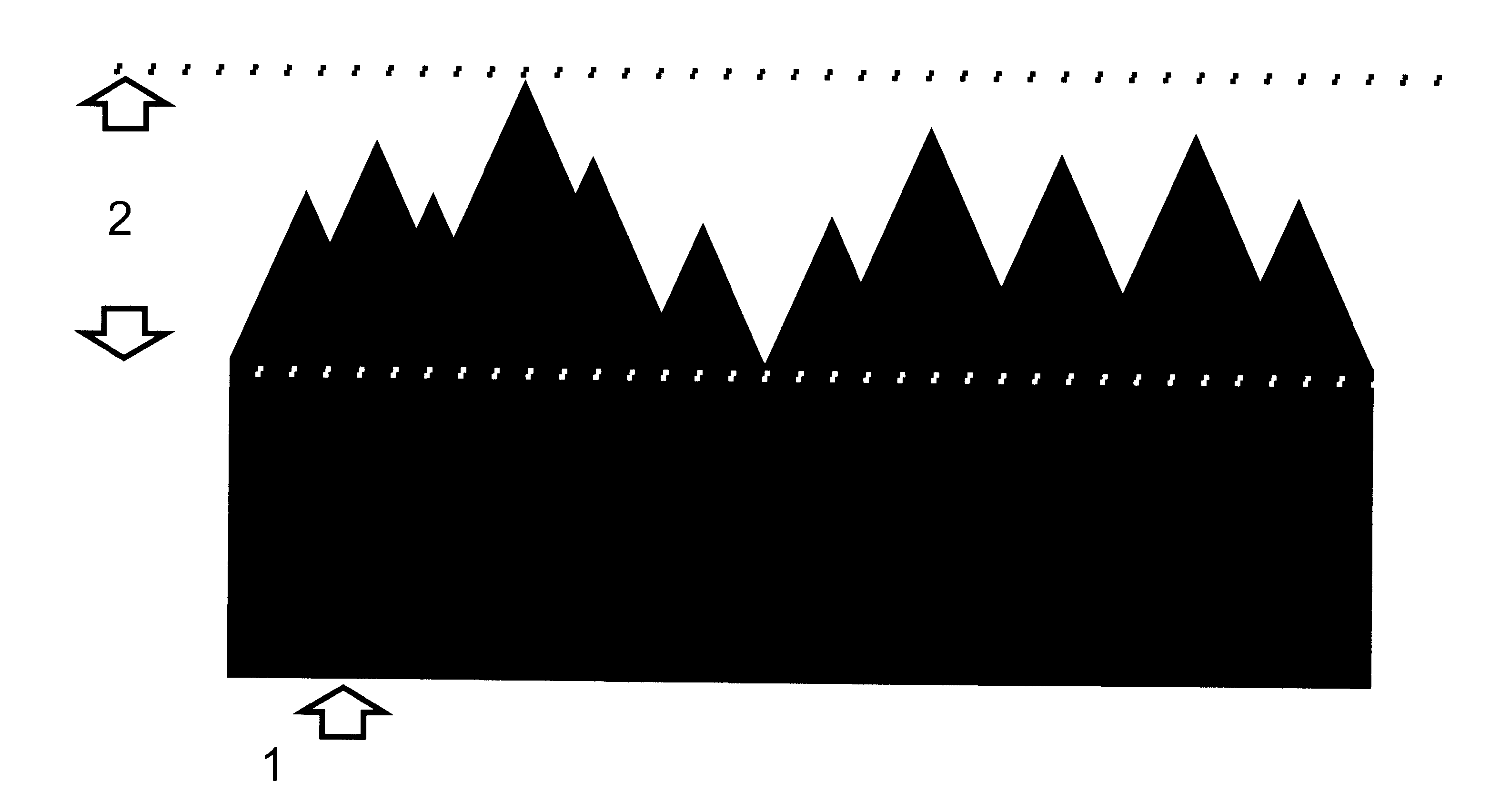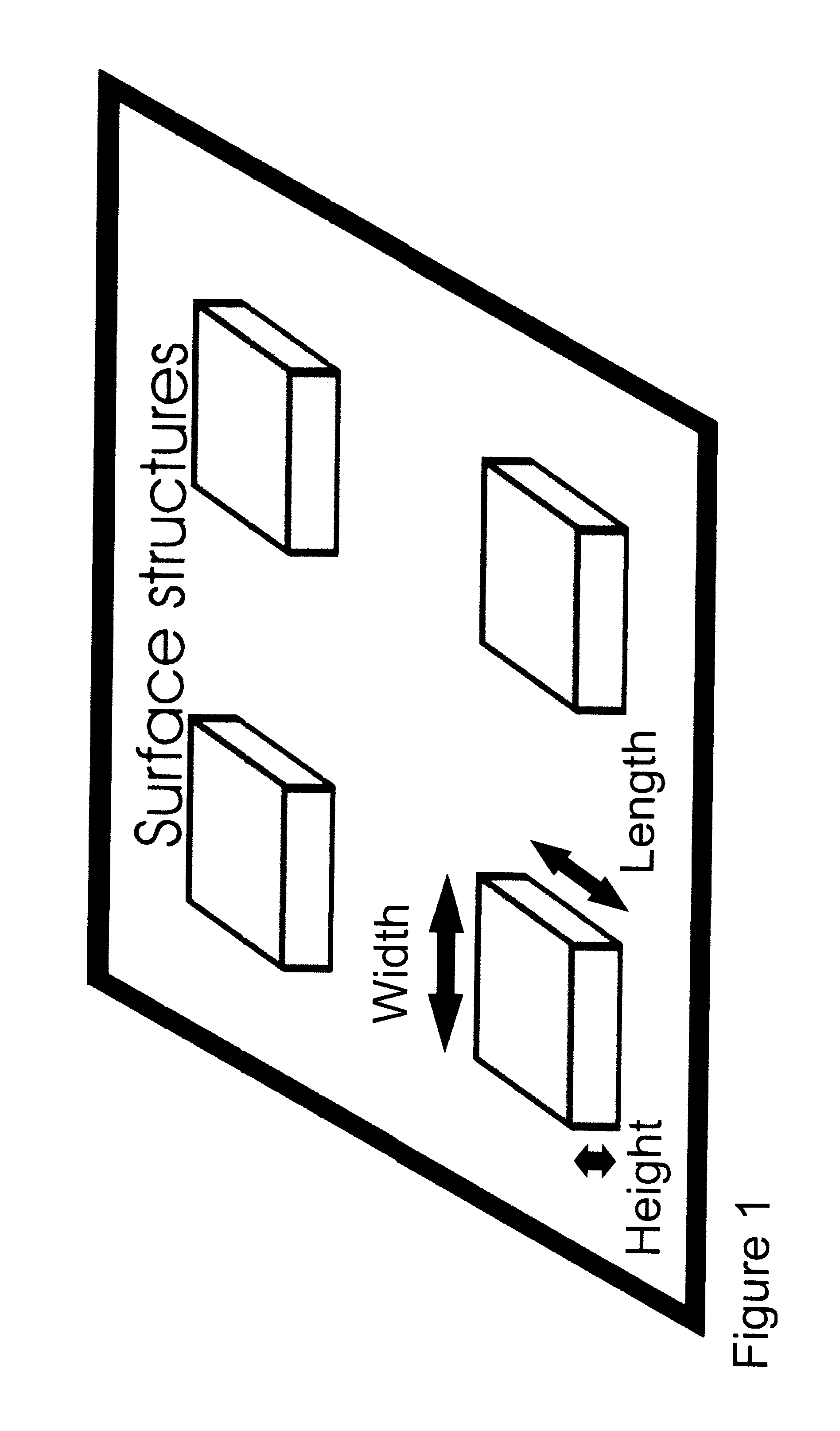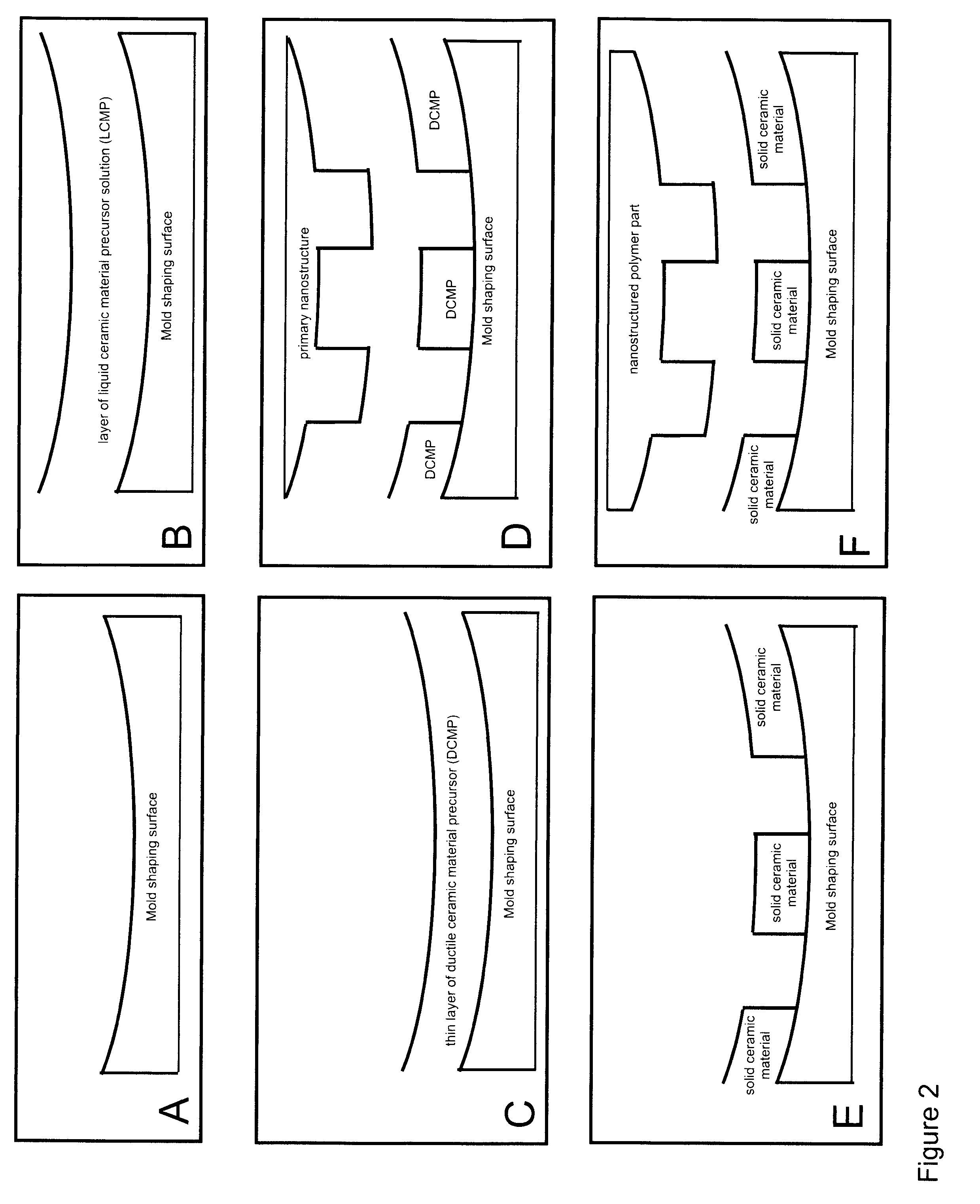Method and apparatus for producing a nanostructured or smooth polymer article
- Summary
- Abstract
- Description
- Claims
- Application Information
AI Technical Summary
Benefits of technology
Problems solved by technology
Method used
Image
Examples
Embodiment Construction
[0091]The present invention is a method for applying micro or nanostructures to a conventional polymer shaping tool. It consists of 6 mandatory and 1 optional step: (1) An initial conventional polymer shaping tool with a non-smooth surface, (2) coating of the conventional polymer shaping tool with a liquid ceramic material precursor solution, (3) evaporation of solution solvent to form a ductile film, (4) Structuring of the ductile film by a mechanical embossing process, (5) curing of the structured ductile film of ceramic material precursor to a structured film of hard ceramic material, and (6) optionally functionalizing the structured film of hard ceramic material with a self assembled monolayer of a silane with a functional end-group, and (7) a polymer shaping step where the tool is used for making a nanostructured polymer replica by an industrial polymer shaping process. (1) is referred to as the initial step, (2) is referred to as the coating step, (3) is referred to as the eva...
PUM
| Property | Measurement | Unit |
|---|---|---|
| Temperature | aaaaa | aaaaa |
| Temperature | aaaaa | aaaaa |
| Fraction | aaaaa | aaaaa |
Abstract
Description
Claims
Application Information
 Login to View More
Login to View More - R&D
- Intellectual Property
- Life Sciences
- Materials
- Tech Scout
- Unparalleled Data Quality
- Higher Quality Content
- 60% Fewer Hallucinations
Browse by: Latest US Patents, China's latest patents, Technical Efficacy Thesaurus, Application Domain, Technology Topic, Popular Technical Reports.
© 2025 PatSnap. All rights reserved.Legal|Privacy policy|Modern Slavery Act Transparency Statement|Sitemap|About US| Contact US: help@patsnap.com



